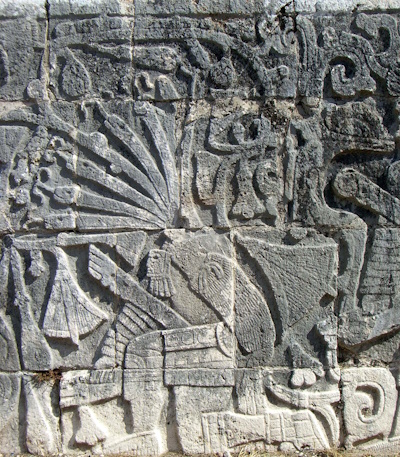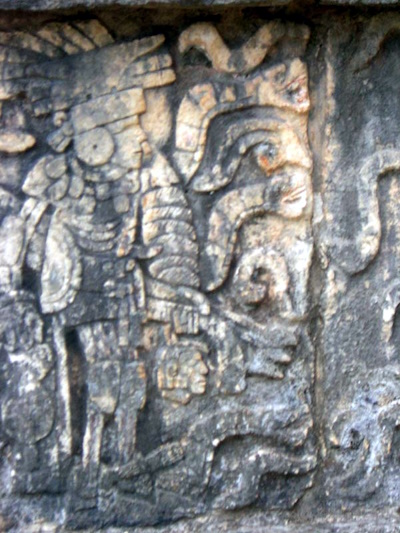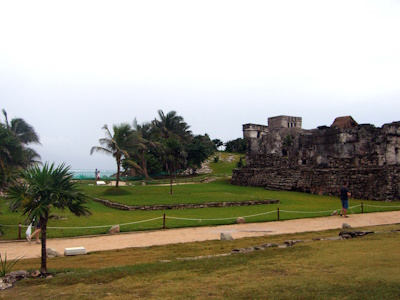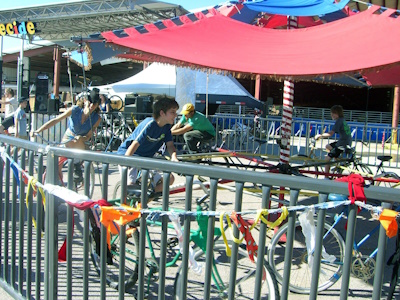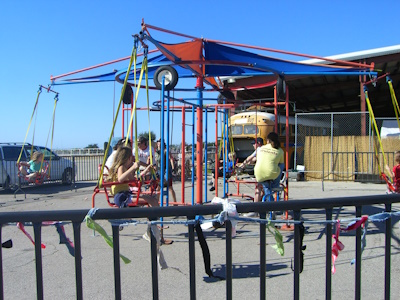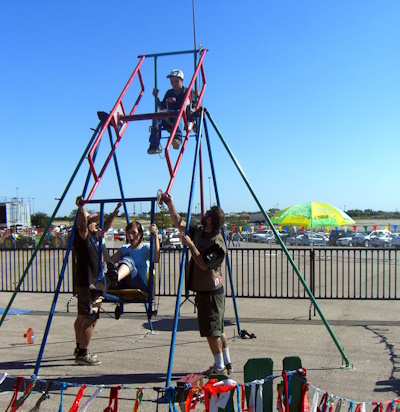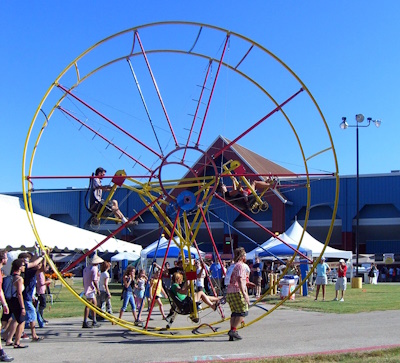Alexis Glynn Latner "Hurricane Moon": FACT reading group discussion
10 people attended the discussion of Alexis Glynn Latner's debut novel "Hurricane Moon". 4 people have read Latner's short stories before. 7 people started the book, 4 of them finished. Some others didn't finish it because they got it too late. This book had not been in stores for long at the time of the discussion. Some of these people were planning to finish it, if for no other reason then because they know Alexis personally (she has been coming to ArmadilloCons for many years).
"Hurricane Moon" is a story of an interstellar mission to find a habitable planet for humans to colonize. Finding the right planet takes longer than expected, and having spent a thousand years in a stasis, the colonists wake up with significant gene damage. Unless the damage is somehow fixed, they'll be unable to procreate; hence, the mission will have failed. The only person capable of coming up with a way to fix the damage is Joe, a brilliant geneticist who is somewhat of a difficult character. The other protagonist is a ship doctor named Katharin. Joe and Katharin feel attracted to one another despite disagreeing on just about everything.
Readers quibbled with science and with romance
People's opinions on the romance thread varied. Two people commented that the book lost their interest when the courtship of the two main characters took the central stage. Some others said the romance wasn't done very well: it wasn't as sophisticated as, for example, the kind of romance you find in Lois Bujold novels. "Those two people seemed to forget they were scientists, they didn't behave like scientists," said a reader. Other readers argued that the love story didn't dominate the novel; this was still hard SF, not a romance novel with a spaceship thrown in. The love story was merely part of the character development.
Some people found quibbles with the science in the book. One reader said it's strange for an Analog writer like Alexis to have pools of anaerobic bacteria on the surface of the planet (where they are presumably exposed to oxygen). Then he thought the explanation why the plants on the planet were blue was scientifically infeasible. These two perceived errors ruined his enjoyment of the book so much he put it down. Regarding the blue color of the plants, another reader tried to convince him he misunderstood the explanation. Somebody also thought Alexis Glynn Latner played fast and loose with deceleration. The numbers didn't add up -- the engine didn't have enough power to slow the ship down over a short period of time.
The plot lost its focus in the second half
Others, including readers well-versed in science, did not see serious problems in that respect. They found the science plausible, and they liked how the book started out as a classical hard SF story. The decision making that went into selecting the right planet, the weighing of the risks -- to stay at the originally selected planet, even though it turned out to be much worse than expected, or to travel further in search for a more suitable planet and risk greater gene damage -- all of this caught their interest. However, some of those who were initially impressed, thought the story lost focus in the second half. When the crew settled on the planet, it seemed the author didn't always know what to do with them. A reader said: "I could tell it was the first really long thing Alexis has written, because the plot was in some places, OK, I don't know what I should do next, so let's let Joe (one of the two main characters, the brilliant geneticist) wonder around and get lost. It happened 2-3 times. One time I could have handled, but 2-3 times? And he's the only guy who can figure out how to fix the genome so that the people could reproduce? And they let him get lost? And the plot depends on him getting lost?"
It can make you ponder logistics of running an interstellar mission
There were other indications that the plot wasn't well thought out. One reader said: "I would have wished that they would have done more exploration of Green, Blue and the other planet, sending drones or something, before settling down. Particularly because Blue is in the title of the book. They never go there, and yet it's in the title." Another reader reminded him that the mission had only enough drones for one planet. This led to an observation that the expedition seemed rather poorly equipped. They only had 1 doctor and one person with training in first aid, which is rather strange for an expedition that has landed on an unknown planet. (Not counting, of course, hundreds of doctors and people of all specialties that were in the stasis, waiting for their turn to wake up -- perhaps decades after the first colonists have landed. Those people were "passengers", not the crew.) This led to an interesting discussion of what is an optimal crew composition for an expedition exploring an alien planet. One reader, after thinking about it for a while, concluded it was a rational idea to have just the absolute minimum of people awake until they determine who else they actualy need. Because the more people you wake up, the more demands you have on resources, and then it becomes a challenge to find out what combination of human resources you need to wake up in order to support all those additional people that have woken up.
So it seems there are readers in this group who have given more than a passing thought to the logistics of running an interstellar mission. They've also read enough books in this particular subgenre where you have a spaceship with colonists in a stasis. Despite the debatable flaws of logic, "Hurricane Moon" came out ahead of many books in this subgenre. It may sound like this discussion report focuses mostly on the negative, but actually a lot of people in the group liked it. I guess they just didn't make it very clear to me what exactly they liked it for.

Alexis Glynn Latner at ArmadilloCon 2007
Or maybe they did, to some extent. They liked the culture, for example. The new culture the colonists are trying to build in this new world, the rituals they create, was seen as some of the more interesting things of the novel. One reader, though, was thrown off by the characters changing their last names, as it made it difficult for him to keep track of them. He also found the motivations of the colonists not very credible. Not just the motivations for taking on the names of their home cities ("if they are forever cut off from Earth, why are they holding on the geographical areas that have divided us for a long time?"), but also the fundamental reason for leaving the Earth. Several main characters seemed to be driven by the notion that the Earth society was too screwed up, so they had to go somewhere else to establish a better society. But the colonists are only human, and human society is not going to be all that much better elsewhere, the reader pointed out.
Overall, most readers thought all of these flaws could be attributed to this being Alexis Glynn Latner's first novel. They thought Latner had potential, and her subsequent books are bound to be better.
I wanted to like this book, because I have a weakness for hard SF, and because Alexis Glynn Latner is such a nice person, but I found it less than satisfactory for several reasons. The pacing is, to borrow a word from another FACT reading group member, a bit "pedestrian". From the time the mission lands on planet Green, nothing much science-fictional happens. There are no interesting scientific discoveries until the very end. Instead, the pages are filled with interpersonal drama.Even though the colonists in the end make two significant discoveries that challenge their assumptions about this planet, those discoveries play no part in solving the main problem they are facing -- healing the damage to their genes.
SPOILERS!
It is especially strange that the colonists conclude that the aliens made Blue what it is and put it there in orbit for religious purposes. It's hard to believe that a very advanced technological civilization would attach so much significance to religious symbols as to make an artifact of planetary proportions and put it in orbit. As an explanation of Blue's origin and purpose, it seems rather like a cop-out. It's almost as if scientists can't be bothered to seriously study Blue, so they conveniently label it a religious artifact, because then you don't have to explain anything -- who can begin to guess what the alien religion was like; whereas if you assumed there were good scientific, technological or political reasons for the Blue to be made what it is and placed where it is, you would have to continue to look for them.
END OF SPOILERS
When I pointed out that those discoveries play very little role in the story, one reader suggested that maybe their implications are left to be explored in a sequel.
Another way the resolution of the book was unsatisfactory is that the ending depends on a protagonist's psychological transformation rather than scientific / technical ingenuity. That's not what I would expect from a classic hard SF tale.

